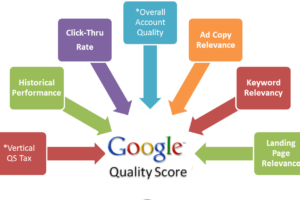Customer Relationship Management (CRM) software has become a cornerstone for organizations to manage their sales, customer service, and marketing activities effectively. Salesforce, a leading CRM platform, has gained immense popularity for its versatility and robustness. With the increasing adoption of Salesforce, the demand for certified developers is rising.
If you’re eager to dive into the world of development and want to know how to become a certified Salesforce developer, you’ve come to the right place. This blog will serve as your comprehensive Salesforce developer roadmap to success.
Read More: Choose Your Career as a Salesforce Developer
Who is a Salesforce Developer?
A Salesforce Developer is a software professional specializing in designing, developing, and customizing applications and solutions within the Salesforce platform.
They use Salesforce’s tools, including Apex (a proprietary programming language), Visualforce, and Lightning components, to build scalable CRM solutions tailored to business needs.
Role & Responsibilities of a Salesforce Developer
A Salesforce Developer primarily focuses on leveraging Salesforce’s capabilities to meet business requirements.
They ensure that Salesforce applications integrate seamlessly with other systems and are user-friendly and efficient.
Responsibilities of a Salesforce Developer
- Custom Application Development: Build custom functionalities using Apex, Visualforce, and Lightning components.
- System Integration: Integrate Salesforce with external systems like ERPs, APIs, or third-party tools.
- Customization: Configure Salesforce objects, workflows, and processes to match business needs.
- Troubleshooting & Maintenance: Debug, optimize, and maintain Salesforce applications for performance and stability.
- Data Management: Handle data migrations, security, and access control within Salesforce.
- Collaboration: Work with admins, consultants, and business stakeholders to understand requirements and deliver solutions.
- Testing & Deployment: Perform testing to ensure solutions are error-free and deploy them to production environments.
Salesforce Developers play a crucial role in enhancing CRM capabilities and ensuring Salesforce aligns with organizational goals.
You have to understand who is a Salesforce Developer and what are there roles & responsibilities. Now, it’s time to move to the next section and get the guide on a Salesforce Developer Roadmap.
Step 1: Understand the Basics of Salesforce Developer Roadmap
Before you embark on your journey to become a certified Salesforce developer, it’s essential to build a strong foundation by understanding the basics of Salesforce.
Start by exploring the Salesforce website, reading documentation, and getting familiar with key concepts like objects, records, fields, and relationships. Take the time to learn about Salesforce’s core features and functionalities.
Step 2: Learn a Programming Language
Salesforce development primarily revolves around coding and customization. To become a certified Salesforce developer, you must be proficient in at least one programming language.
Apex (Salesforce’s proprietary language) and JavaScript are the most commonly used languages in Salesforce development. Start by picking one and mastering it.
Step 3: Trailhead – Your Learning Playground
Salesforce offers a fantastic platform for learning and honing your skills called Trailhead. Trailhead provides a plethora of modules, projects, and trails that cover everything from the basics to advanced development topics.
It’s a free resource, and you can earn badges and points as you complete modules. This is an excellent way to demonstrate your skills to potential employers.
Step 4: Set Up a Developer Edition
To practice what you learn, it’s crucial to set up a Salesforce Developer Edition. This is a free, fully functional version of Salesforce where you can experiment without impacting real data. It’s an invaluable tool for hands-on learning and development.
Step 5: Gain Real-World Experience
Learning from books and tutorials is great, but real-world experience is invaluable. Consider joining a Salesforce project at your workplace or collaborating with others in the Salesforce community. Contributing to actual projects will deepen your understanding and strengthen your resume.
Step 6: Choose Your Specialization
Salesforce development encompasses various roles, such as Salesforce Administrator, Salesforce Lightning Developer, Salesforce Integration Specialist, and more. Decide which area interests you the most and align your learning accordingly.
Step 7: Get Certified
Salesforce Developer Roadmap offers a range of certifications for developers, each catering to specific skills and roles. Some popular certifications include:
– Salesforce Certified Platform Developer I
– Salesforce Certified Platform Developer II
– Salesforce Certified Integration Architecture Designer
Choose the certification that aligns with your specialization and career goals. Prepare by revisiting Trailhead modules and practice exams. Once you feel confident, schedule your certification exam.
Step 8: Stay Informed
The Salesforce ecosystem is constantly evolving. To remain a successful Salesforce developer, it’s vital to stay updated with the latest features, best practices, and industry trends. Join Salesforce forums, attend webinars, and read blogs to keep your knowledge fresh.
Step 9: Build a Portfolio
As you gain experience and certifications, create a portfolio showcasing your projects, accomplishments, and certifications. A well-documented portfolio will impress potential employers or clients.
Step 10: Network and Connect
Join local Salesforce user groups and attend community events. Networking is a powerful way to meet fellow developers, share knowledge, and potentially discover job opportunities.
Hence, here is the entire step-by-step guide to the Salesforce Developer Roadmap. Focus on this and go ahead with the success.
Read: Common Mistakes While Working on Startup
Conclusion
Becoming a certified Salesforce developer is a rewarding journey that requires dedication and continuous learning. With determination and a commitment to staying up-to-date with Salesforce’s developer roadmap and ever-evolving ecosystem, you can pave your way to a successful career as a certified developer. Remember, the key to success is persistence and a passion for innovation in the world of CRM.
Good luck on your Salesforce Development Journey!
Frequently Asked Questions
- What is Salesforce development?
Salesforce development involves building, customizing, and managing applications on the Salesforce platform using tools like Apex, Visualforce, and Lightning Web Components. - Do I need coding experience to become a Salesforce developer?
While Salesforce provides many declarative tools that don’t require coding, learning programming languages like Apex and JavaScript is essential for advanced customizations and development. - What certifications should I pursue first as a beginner?
Start with the Salesforce Certified Platform Developer I certification, which validates fundamental Salesforce development skills. - What is Trailhead, and how can it help in my learning journey?
Trailhead is Salesforce’s free learning platform offering interactive modules and trails to learn Salesforce concepts, earn badges, and prepare for certifications. - How long does it take to become a certified Salesforce developer?
The timeline varies based on your prior experience. For beginners, earning your first certification typically takes 3–6 months of consistent learning and practice.











InMotion Hosting: InMotion Hosting offers fast and reliable hosting services with excellent customer support. They provide a variety of hosting options, including business hosting, VPS hosting, and dedicated servers.
Siteground: Siteground is known for its exceptional speed and advanced security features. They provide excellent customer support, automatic backups, and a user-friendly interface. http://webward.pw/.
Наш веб-портал “Помогатор Mupapat” ориентирован для тех, кто хочет улучшить свою обычную жизнь более практичной, эффективной и занимательной. Мы представляем необычные и подтвержденные временем советы.
Приглашаем вас окунуться в интересные аспекты, что помогут расширить ваш взгляд:
-Как сделать мыло из обмылков : https://mupapat.ru/kak-sdelat-mylo-iz-obmylkov
-Как сделать png с прозрачным фоном : https://mupapat.ru/kak-sdelat-png-s-prozrachnym-fonom
-Как сделать красивые кудри : https://mupapat.ru/kak-sdelat-krasivye-kudri
-Как сделать кораблик из бумаги а4 : https://mupapat.ru/kak-sdelat-korablik-iz-bumagi-a4